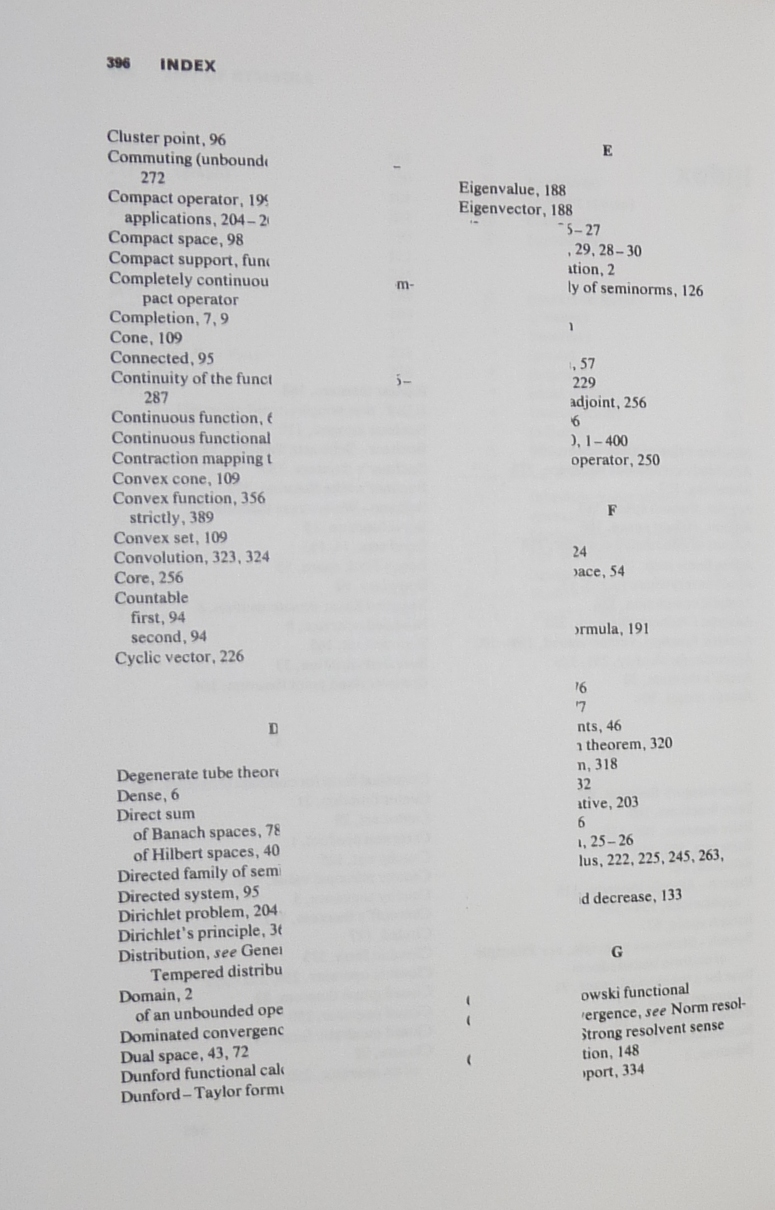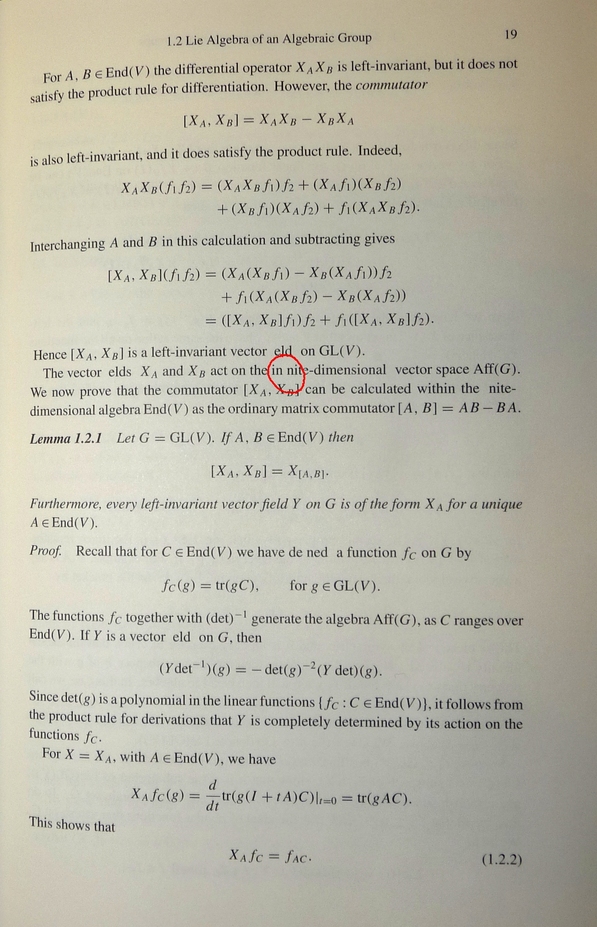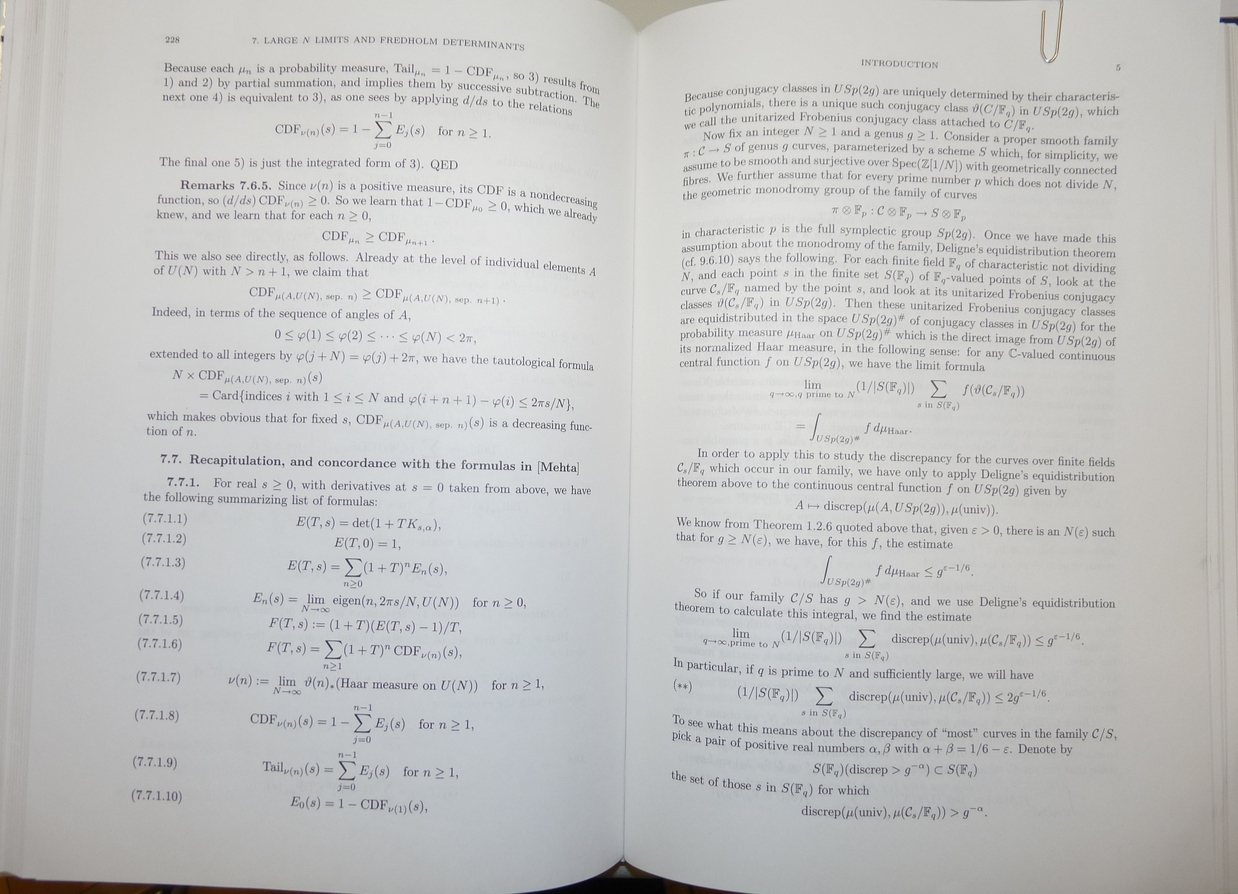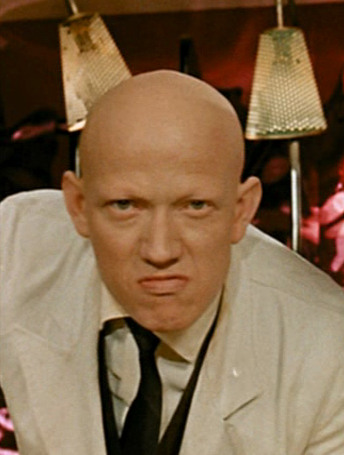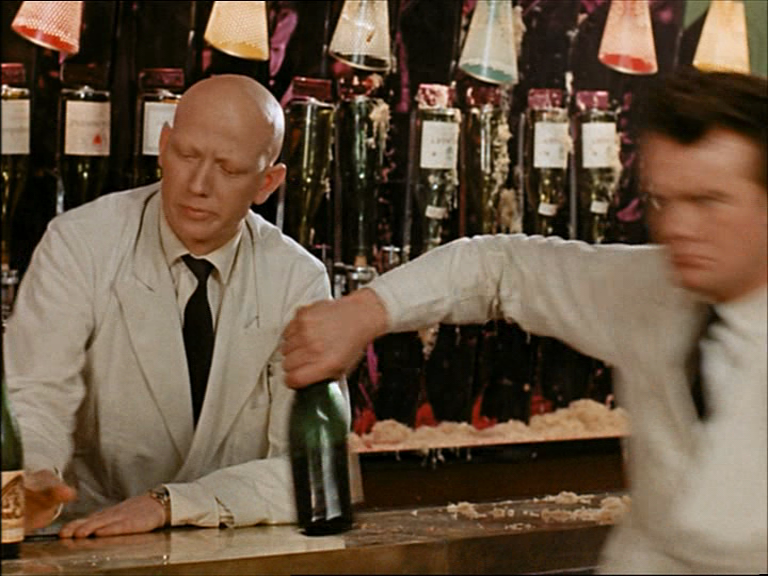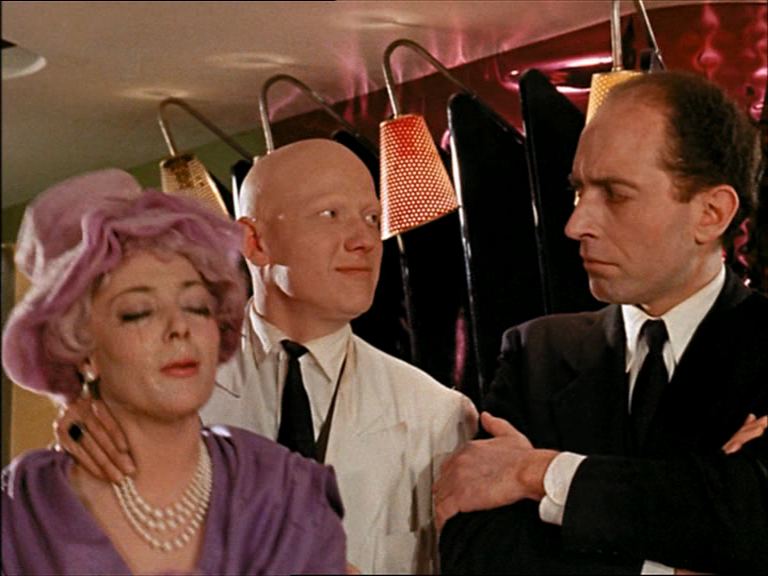In a previous post, I had described some of my paper with J. Jacod and A. Nikeghbali concerning a type of convergence theorems for sequences (Xn) of random variables which do not converge in distribution, but have the feature that the decay of the values of the characteristic function
$latex \mathrm{E}(e^{iu X_n}),\quad\quad\text{ for fixed } u\in\mathbf{R},\quad n\rightarrow +\infty$
is very precisely given by that of characteristic functions in some family of standard random variables — the basic examples were either centered gaussian variables, so
$latex \mathrm{E}(e^{iu X_n})\sim_{n\rightarrow +\infty} \exp(-\sigma_nu^2/2)\Phi(u),$
for some positive σn (tending to infinity usually), or Poisson variables, in which case
$latex \mathrm{E}(e^{iu X_n})\sim_{n\rightarrow +\infty} \exp(\lambda_n(e^{iu}-1))\Phi(u)$
for some positive λn (tending to infinity), in both cases for some limiting function Φ(u) which is assumed to be continuous (and takes values 1 at 0) to avoid degenerate cases; in general, it is not itself the characteristic function of a random variable.
At the end of my previous post, I said we hoped there would be more developments, and I’d like to report now on a very interesting analogy that A. Nikeghbali and I have unearthed in the last few weeks concerning two arithmetic situations in which “mod-Poisson” and “mod-Gaussian” convergence, respectively, occur or are conjectured to occur.
The context was described at the beginning of this earlier post: it is the Erdös-Kác Theorem for the distribution of the number of prime divisors of an integer (without multiplicity, though this has no real practical effect on the results); we had found that this arithmetic function ω(n) exhibited mod-Poisson convergence (when considered for n<N and N going to infinity), and observed that a simple renormalization trivially leads to the Gaussian limit found by Erdös and Kác.
More precisely, the basic formula (which, in principle, goes back to Rényi and Turán) is the following asymptotic:
$latex \frac{1}{N}\sum_{n\leq N}{e^{iu(\omega(n)-1)}}\quad\sim_{N\rightarrow +\infty}\quad \Phi_1(u)\Phi_2(u)\exp((\log\log N)(e^{iu}-1)),$
in which we purposely separate the limiting function as a product of two pieces
$latex \Phi_1(u)=\frac{1}{\Gamma(1+\exp(iu))}$
and
$latex \Phi_2(u)=\prod_{p\text{ prime}}{(1-1/p)^{e^{iu}}(1+e^{iu}/(p-1))},$
an absolutely convergent Euler product. [The first term is zero at odd integer multiples of π, in which case the meaning of the asymptotic is that, after dividing both sides by the Poisson factor, the limit exists and is zero; it is then a form of the Prime Number Theorem.]
In the standard proof, those two factors occur very differently: the Euler product is the residue at 1 of a suitable Dirichlet generating series, and the Gamma function appears as the result of an approximate Hankel integral around the (typically non-polar) singularity of this generating function.
From the probabilistic perspective, however, the two share the common feature of being individually limiting functions for suitable sequences of random variable converging in the mod-Poisson sense.
Our new work starts with a remark concerning this fact for the first (gamma) factor, which is fairly obvious in retrospect: we had shown precisely a result which can be interpreted as
$latex \mathrm{E}(e^{iuZ_d})\quad\sim_{d\rightarrow +\infty}\quad\Phi_1(u)\exp((\log d)(e^{iu}-1))$
where Zd is distributed as a sum of independent Bernoulli random variables of the type
$latex Z_d=B_{1/2}+\cdots +B_{1/(d+1)},\quad\quad \mathrm{P}(B_x=1)=x.$
(This is where having the right formula for the gamma function helps to avoid tearing up too much hair). Now the point is that this is the distribution of the number of cycles (minus one) of a (uniformly chosen) random permutation of d+1 letters. This is something that might have been clear already at the time of the first paper, since this distribution is quite well-known. Our excuse for not spotting it right away is that it is not, in itself, an obvious fact. However, we found it explained in the early pages of the very nice book of Arratia, Barbour and Tavaré on “Logarithmic combinatorial structures”. (This computation is due to Feller — see page 815 of the paper linked).
The relevance of this observation is quite clear: not only is it a fairly well-established fact that the number of prime divisors of an integer of size N is somewhat analogous to the number of cycles of a permutation of (roughly) log N elements, but this identification immediately brought to mind the “mod-Gaussian” conjecture for moments of the Riemann zeta function, i.e., the conjecture (already mentioned in the previous post) that
$latex \lim_{T\rightarrow +\infty}\quad{e^{u^2 \log\log T}\mathrm{E}(e^{iu\log |\zeta(1/2+it)|^2})}=\Psi_1(u)\Psi_2(u),$
with another limit expressed as a product of two terms. Here the first term is
$latex \Psi_1(u)=\quad\lim_{N\rightarrow +\infty}\quad{e^{u^2(\log N)}\mathrm{E}(e^{iu\log |Y_N|^2})},$
where
$latex Y_N=\det(1-A_N)$
with AN Haar-distributed unitary matrix of size N. The second term is an Euler product:
$latex \Psi_2(u)=\prod_{p}{\Bigl(1-\frac{1}{p}\Bigr)^{-u^2}\Bigl\{\sum_{m\geq 0}\Bigl(\frac{\Gamma(m+iu)}{m!\Gamma(\lambda)}\Bigr)^2p^{-m}}\Bigr\}$
(this conjecture is due to Keating and Snaith, in slightly different formulation).
Thus, the structure of the two limits is exactly similar: (i) one term with group-theoretic meaning, involving something that is known, or felt, to be a good analogue of the number theoretic quantity under the microscope [for permutations and integers, see this amusing survey of Granville]; (ii) one term which is an Euler product, and which is — after some more computation — what you would expect to get if the primes behaved perfectly independently.
This is obviously strong evidence for… something… but what exactly? One may well be puzzled if asked to say precisely what this indicates. However, light shines much brighter if we now pass to finite fields and function fields thereover. [By the way, “thereover” is a word; though the last OED quote is from William Morris, 1870, Google finds many current examples in patentspeak…]
What is special about finite fields is that they provide a way to associate group-theoretic objects to arithmetic ones, by means of the Frobenius automorphisms. In the case of L-functions of algebraic varieties, this is their spectral interpretation as characteristic polynomials of Frobenius automorphisms F acting on suitable vector spaces (usually l-adic cohomology spaces): in terms of the usual variable T=q-s for varieties over a field with q elements, we have something like
$latex L(T)=\det(1-TF).$
This is a very deep fact, due to the work of the Grothendieck school (see below for one of the very few special cases where this can be understood without a lot of theory; the case of L-functions of elliptic curves over finite fields is also reasonably elementary).
What happens next is that when we have a decent family of L-functions, the assignment of F to each element of the family leads to a well-defined map from the parameter space to a set of conjugacy classes of matrices in some algebraic group (the family must be chosen so that this group is fixed!), which can be moved after normalization to a compact form over the complex numbers. This is the basis of the important work of Katz and Sarnak.
The Erdös-Kác Theorem is much simpler, but still remarkably similar. Here we have a finite field Fq with q elements, and the analogue of the ring of integers is classically the polynomial ring
$latex A=\mathbf{F}_q[X],$
the irreducible (monic) polynomials play the role of prime numbers, and therefore the analogue of the number of prime factors of an integer is the number
$latex \omega(f)$
of (monic) irreducible factors of a polynomial f in A. From the case of integers, we would like to associate a permutation to f so that its cycle count is the equal to ω(f). Well, of course this is possible! It is enough to factor
$latex f=\prod_{i=1}^{\deg(f)}{\Bigl(\prod_{1\leq j\leq r_i}{\pi_{i,j}}\Bigr)}$
for irreducible monic polynomials πi,j of degree i, and to map f to a permutation with
$latex r_i\text{ disjoint cycles of length } i\text{ for } 1\leq i\leq d$
which is a permutation σ(f) in the symmetric group of d=deg(f) letters, where (obviously) the number of cycles is equal to the number of irreducible factors of f! Or rather, it is a conjugacy class of permutations, of course, since the assignments of the cycles can be done in many different ways. For instance, f is itself irreducible if the associated permutation is a d-cycle, and σ(f) has as many fixed points as f has roots in the base field (with multiplicity).
There is in fact a more intrinsic definition: at least if we assume that f is squarefree, the permutation σ(f) corresponds (more precisely, it is conjugate) to the action of the Frobenius automorphism as permutation of the d roots of f. Hence, just as is the case for L-functions, the group theory object is naturally related to the Frobenius automorphism, this time acting in a natural way on a finite set instead of a vector space.
And fans of étale cohomology should not fret: there is also an interpretation from this perspective! Namely, consider the 0-dimensional algebraic variety Xf (over the base finite field) with equation f(x)=0; it has only finitely many points, of course, but nevertheless there is a zeta function, and from the definition as an Euler product over the closed points, we get
$latex Z(X_f,T)=\prod_{\pi \mid f}{(1-T^{\deg(\pi)})^{-1}},$
where the product is over monic irreducible factors of f in A. We then have, in true étale fashion, the formula
$latex Z(X_f,T)=\det(1-F_fT|H^0_c(\bar{X}_f,\mathbf{Q}_{\ell}))^{-1},$
which needs no fancy theory really, and simply means in concrete terms that the zeta function is the inverse of the characteristic polynomial of the permutation matrix representing σ(f). Identifying the order of the pole at T=1 from both expressions, we recover the number of cycles of σ(f) as the number of irreducible factors of f, but there are probably other questions to pursue concerning the zeta functions.
The natural question is now: can one actually do something with all this analogy? Well, one can clearly expect a finite-field version of the mod-Poisson convergence for ω(f), where f ranges over monic polynomials of degree d tending to infinity over a fixed finite field:
$latex \frac{1}{q^d}\quad\sum_{\deg(f)=d}{e^{iu(\omega(f)-1)}}\quad\sim_{d\rightarrow +\infty}\quad \exp((\log d)(e^{iu}-1))\gamma_q\Phi_1(u)\Phi_3(u),$
where there is an innocuous constant γq>0, the function Φ1 is the same as before (i.e., it comes from random permutations), and
$latex \Phi_3(u)=\prod_{\pi}{(1-1/q^{\deg(\pi)})^{e^{iu}}(1+e^{iu}/(q^{\deg(\pi)}-1))},$
where the product runs over irreducible monic polynomials in A (so it is completely analogous to the Euler product for Φ2…) [Update (25/04/09) In fact, the innocuous constant is always 1. See this later post on the Mertens formula.]
This limiting formula can be confirmed using a suitable analogue of the Delange-Selberg method, but Ashkan and I have written down a proof which, instead, focuses on the probabilistic structure suggested by the appearance of random permutations.
Roughly speaking, the basic idea is to use the fact that when mapping f to the associated permutation σ(f), there is a strong form of quantitative equidistribution provided one restricts the attention to polynomials without irreducible factors of small degree. So we split
$latex f=gh$
where g contains the small factors, and h the large ones (this is a very natural and common type of decomposition in analytic number theory), and we rearrange an average over f to start with averaging over h. This is then very close to the same average over random permutations without small cycles, which we analyze separately (again, a fairly standard type of computation in probabilistic group theory). Combining the results, and using the fact that small irreducible factors behave completely independently (i.e., as suggested by the Euler product factor in the mod-Poisson convergence), one is led to the desired formula in a convincing manner, where at least the origin of the group-theory factor is clear. In particular, it could arise without knowing that its value is related to the gamma function.
And for “real” L-functions, then? In some sense, we have proved the simplest case of large degree (or large conductor) version of the Katz-Sarnak type of problems, but cases like families of hyperelliptic curves of increasing genus would be much more interesting.
At least, we hope that a mechanism similar to what happens here can explain the mod-Gaussian convergence, but it goes obviously much deeper. One thing that should be understandable, but which we haven’t quite clarified yet, is: what — if anything — is the analogue here of the permutations without small parts? For this, there should be a kind of “high-rank limit” version of Deligne’s Equidistribution Theorem, for which hopefully the methods of algebraic geometry would be relevant in looking for a proof. And then, who knows what could happen?
